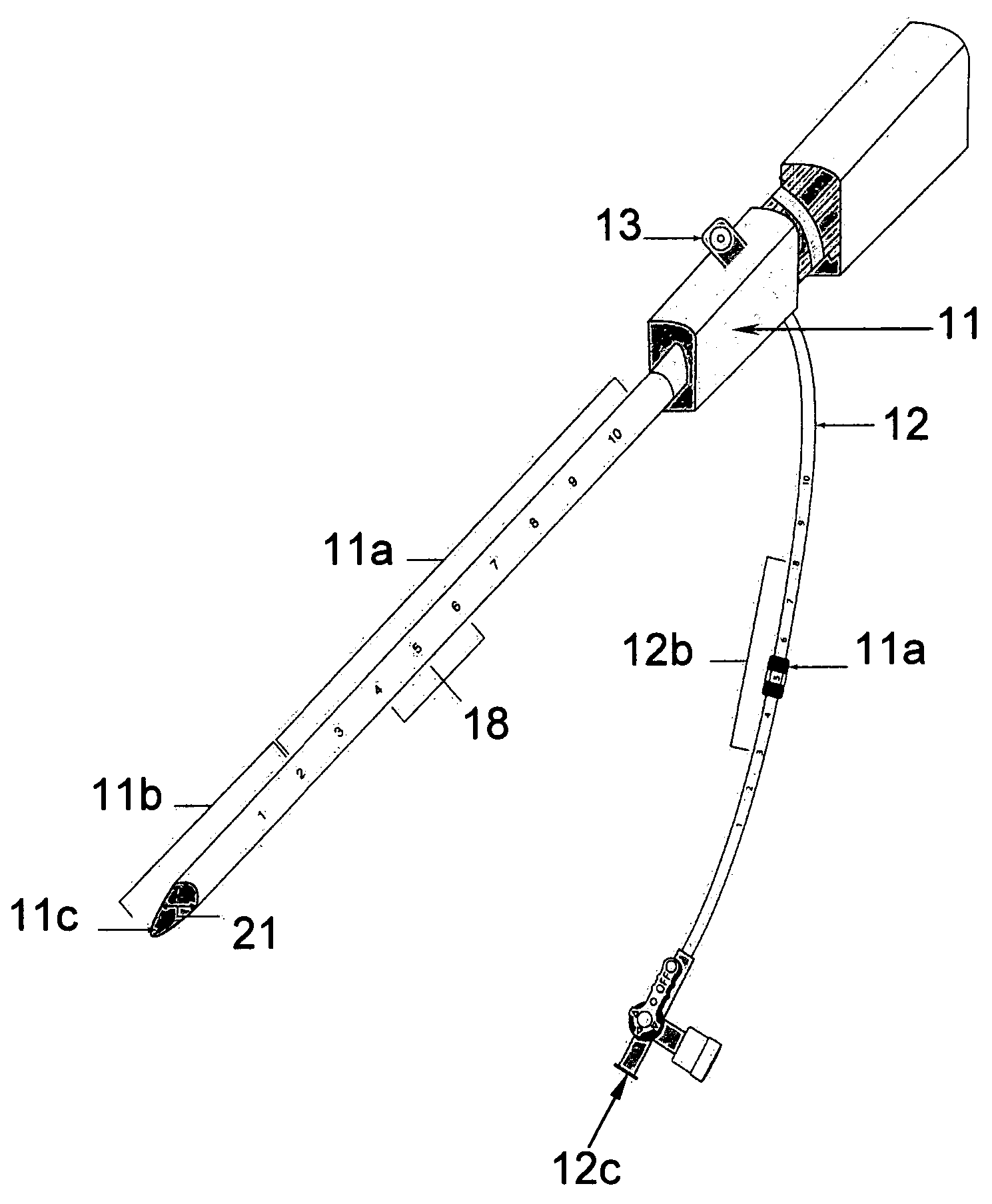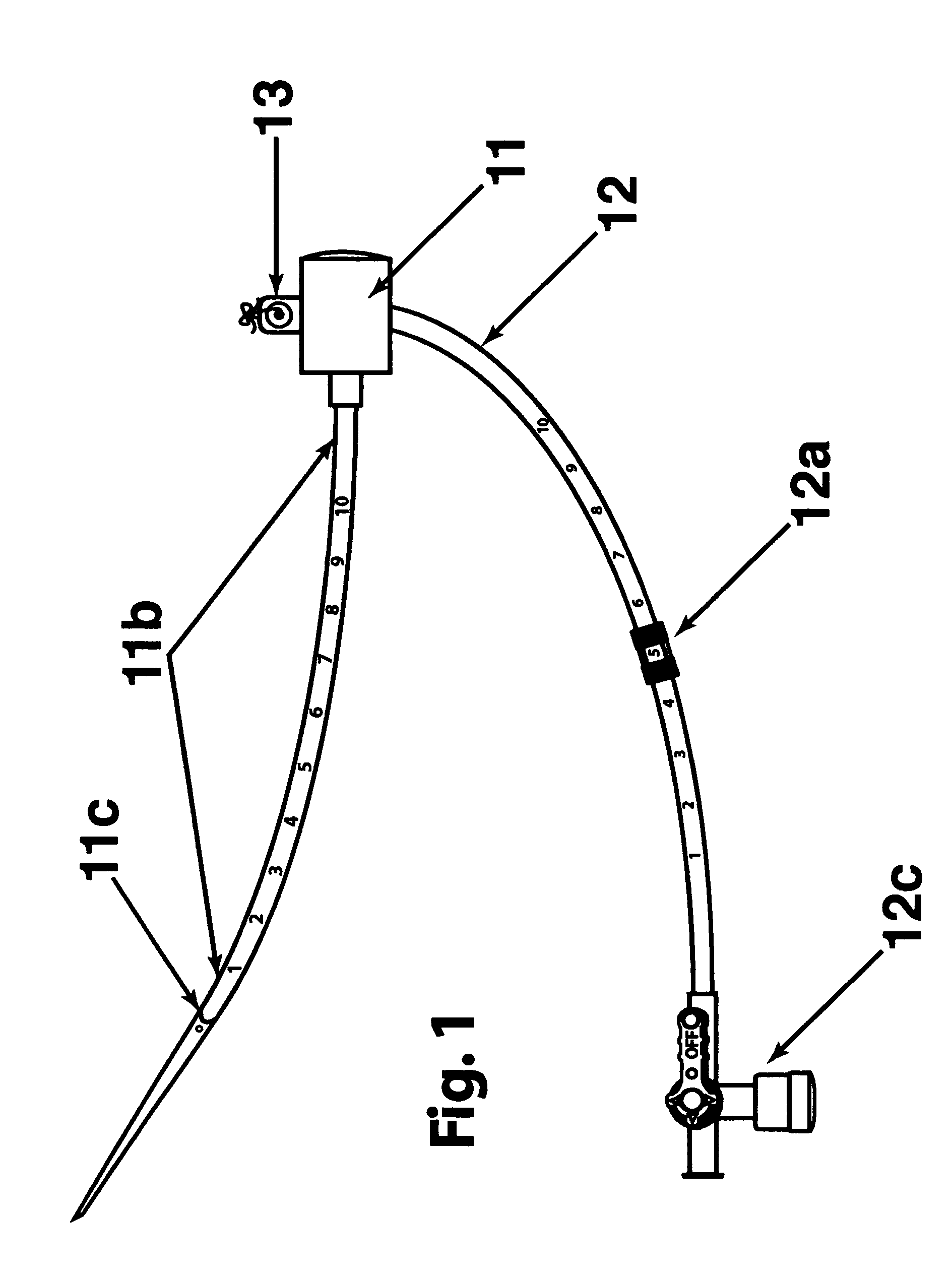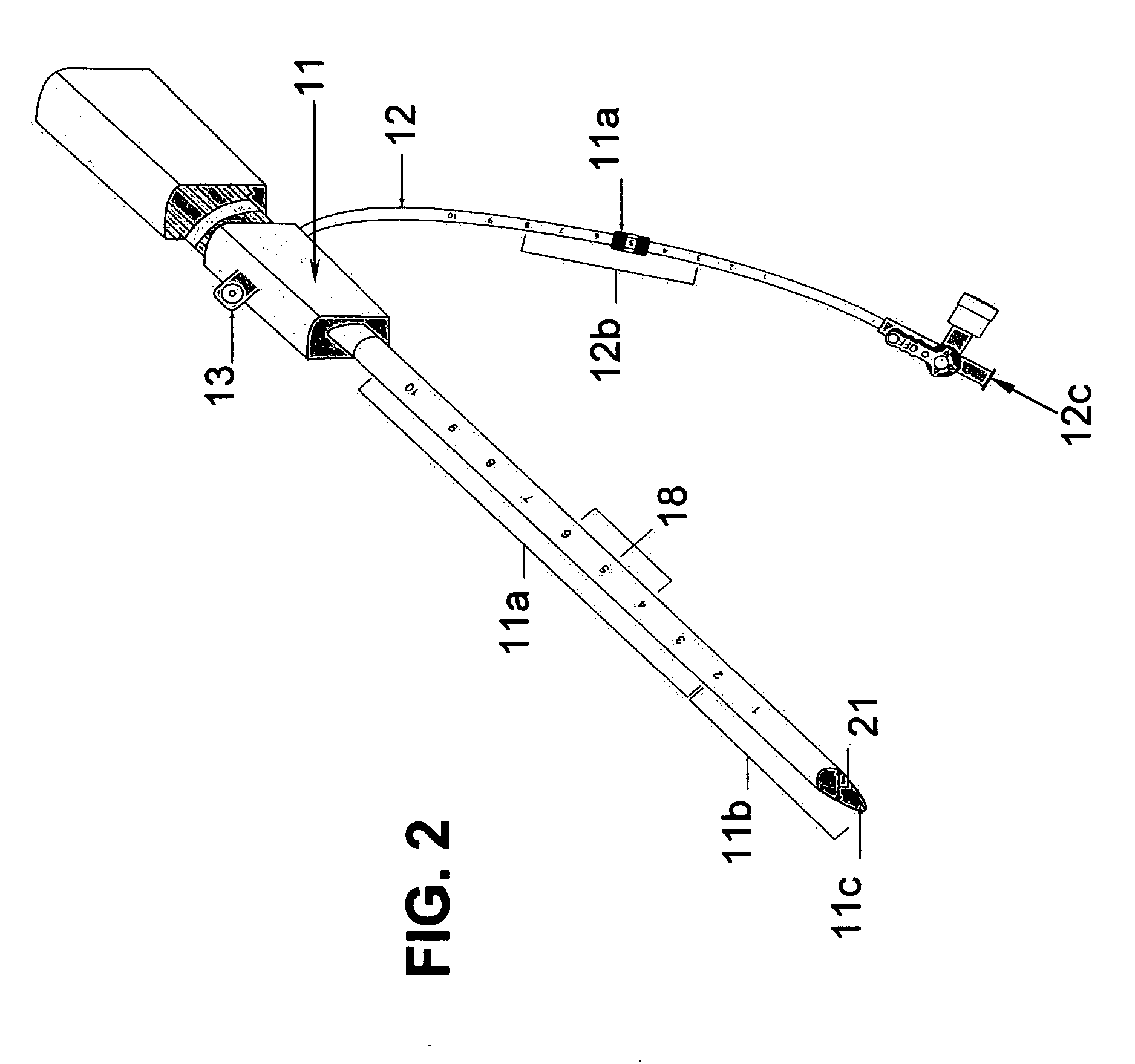Arterio-seal sheath with ots(option-to-seal)
a technology of ots and ots, which is applied in the field of sealing puncture wounds, can solve the problems of not being able to completely seal the wound site, manual pressure must be applied to the site, and the device is rarely used in the field, so as to reduce the time, time, and personnel, and reduce the risk of bleeding from the wound site, and ensure the dislodgement of the anchoring member.
- Summary
- Abstract
- Description
- Claims
- Application Information
AI Technical Summary
Benefits of technology
Problems solved by technology
Method used
Image
Examples
Embodiment Construction
[0028] The two main parts of the invention are: one, the pre-procedural sheath, illustrated in FIG. 2; and two, the sealing device, illustrated in FIG. 8, 9, &10.
[0029] The typical and conventional intravascular surgical procedure (i.e., angioplasty, atherectomy, stenting, angiography, venous filtration, liquid infusion, dialysis, intravascular ultrasound process, and the like) starts with the insertion of a percutaneous 18 gauge needle (not shown) through the skin into the artery. Then, a 0.035 inch guide wire (not shown) is inserted through the needle into the artery to the desired location in the artery. Once the 0.035 inch guide wire is in place, the needle is removed. The improved sheath (FIG. 1) is passed over the 0.035 inch guide wire into the artery. The entry point 11c of the distal portion 11b of sheath is slanted at an angle between fifteen to sixty degrees in order to facilitate a smooth entry of sheath into a blood vessel. Having a beveled edge on the improved sheath m...
PUM
 Login to View More
Login to View More Abstract
Description
Claims
Application Information
 Login to View More
Login to View More - R&D
- Intellectual Property
- Life Sciences
- Materials
- Tech Scout
- Unparalleled Data Quality
- Higher Quality Content
- 60% Fewer Hallucinations
Browse by: Latest US Patents, China's latest patents, Technical Efficacy Thesaurus, Application Domain, Technology Topic, Popular Technical Reports.
© 2025 PatSnap. All rights reserved.Legal|Privacy policy|Modern Slavery Act Transparency Statement|Sitemap|About US| Contact US: help@patsnap.com



